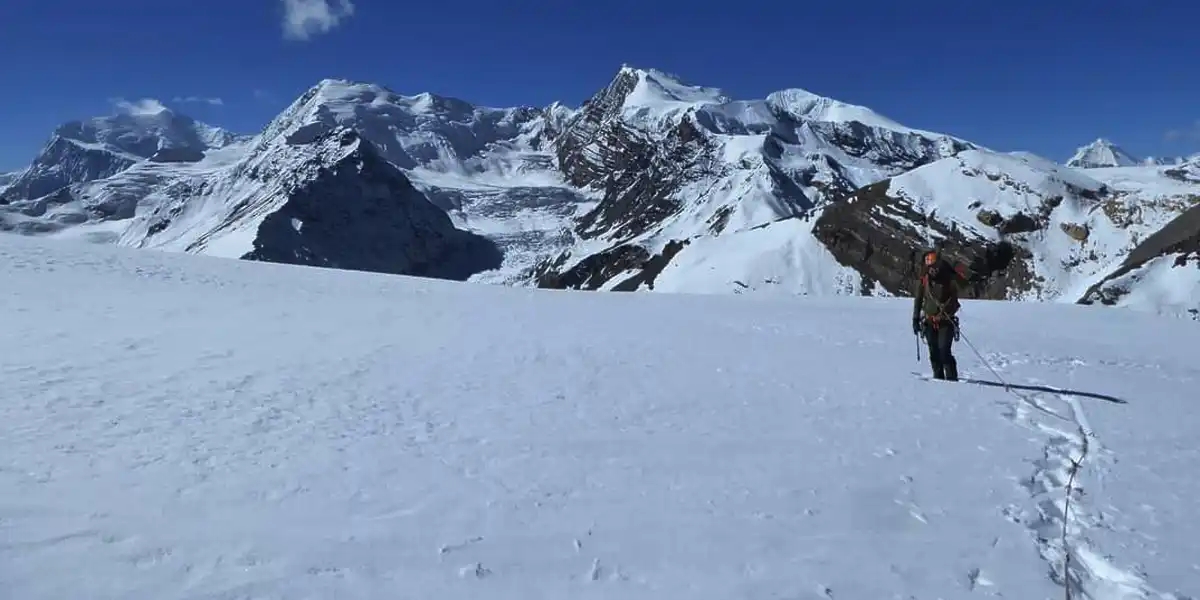


One of the most unique and fascinating places on earth is the Nepalese Everest region. It is the situation of Mount Everest the highest mountain in the world, as well as a separate culture that has been influenced by the harsh climate and isolation of the area.
The Tibetan Buddhism, Sherpa, and Nepali cultures all coexist in the Everest Region. Many of the monasteries and temples in the area practice Tibetan Buddhism, which has had a significant impact on the area. In the area, there is also a prosperous Sherpa culture, and the Sherpas themselves have a distinctive language and culture. The Sherpas are well known for their skill in mountaineering, and mountaineering plays a significant role in this culture.
Numerous locals of Nepali descent contribute to the thriving Nepali culture in the Everest region. Hinduism is a major factor in this culture, and numerous villages in the area have their temples and shrines honoring various Hindu deities.
Discovering the Everest region around the Everest base camp, and its culture is a wonderful way to escalate Nepal's natural beauty. The area is awash in breathtaking natural beauty, from the untamed Himalayan peaks to the lush green valleys and rivers. In addition, it is home to some of the most typical and charming cultures on the planet, which combine Nepali, Sherpa, and Tibetan Buddhist influences.
By visiting some of the numerous monasteries and temples in the area, as well as contributing to some of the diverse cultural pursuits like trekking and mountaineering, tourists to the area can get a sense of the local way of life. People who want to learn about the culture of the area can also participate in several festivals held throughout the year, such as the Mani Rimdu Festival, which is held in the area every autumn.
A memorable experience is exploring the distinctive culture of the Everest region. It is a place that is sure to captivate and inspire, from the breathtaking natural beauty to the dynamic culture.
Of all the ethnic groups that live in the Everest region, the Sherpas are the most well-known. These tough mountaineers have gained notoriety as knowledgeable climbers and guides by assisting in escorting adventurers to Mount Everest's peak. Everest. They are also masters of Himalayan Buddhism, and the religion has a strong hold on their way of life.
In the Everest region, there is another ethnic group called the Rai. These people are the original inhabitants of the Khumbu area, and the Sherpas had a significant cultural impact on them. They are renowned for their vibrant costumes and strong work ethic. They are also well known for their weaving prowess, and tourists enjoy the intricate patterns they produce.
The Tamang is a third ethnic group that lives in the Everest region. These individuals are renowned for their distinctive dialect and way of life, as well as for the age-old weaving methods they use. To make beautiful and complex patterns, they frequently use hand-dyed yarns.
In the Everest region, a fourth ethnic group called the Thakalis lives. Their culture is deeply ingrained in Buddhism because they are primarily Buddhist people. They are renowned for their warmth and the delectable traditional food that they serve.
Sherpas are the final significant ethnic group in the Everest region. They have been residing and working in the area for centuries, and these hardy mountain people are well-known for their courage and climbing prowess to mountains like Mount Everest, Mount Lhotse, Mount Cho-Oyu, and other peaks. They are also invaluable guides for adventurers and climbers because of their profound knowledge of the geography and history of the area.
You can be sure to encounter a culture rich in fascinating traditions and beliefs no matter which ethnic group you encounter in the Everest Region. The Everest Region's culture is one of the most distinctive and fascinating in the world, from the Sherpas' mastery of climbing to Rai's vibrant costumes.
The dishes served in the Everest region are a fusion of Tibetan, Nepali, and Sherpa cuisine. The local ingredients are used to create simple yet flavorful dishes that are served in this area. Thukpa, a hearty noodle soup that is served with a variety of vegetables and meats, is the most well-known traditional dish. Momo, a type of dumpling, is typically served with it. Sel Roti, a sweet rice dish, and Sherpa Stew, a vegetable, potato, and spice stew, are two additional favorites.
The area is also renowned for its distinctive and flavorful drinks, such as Chang, a beer made from barley or maize, and butter tea, a salty tea made with yak butter. The area has many sweet treats to choose from for dessert, including Khapse, a deep-fried pastry, and Gudu, a sweetened rice porridge. the food for the Everest region is similar to other Himalayan regions of Nepal.
The Everest region's cuisine is a fantastic way to learn about the rich cultural inheritance of the area and is a reflection of it. Even the pickiest palate will be satisfied by the food because it is straightforward and flavorful. Whether you're looking for a quick snack or a filling meal, the cuisine of the Everest region is sure to please.
